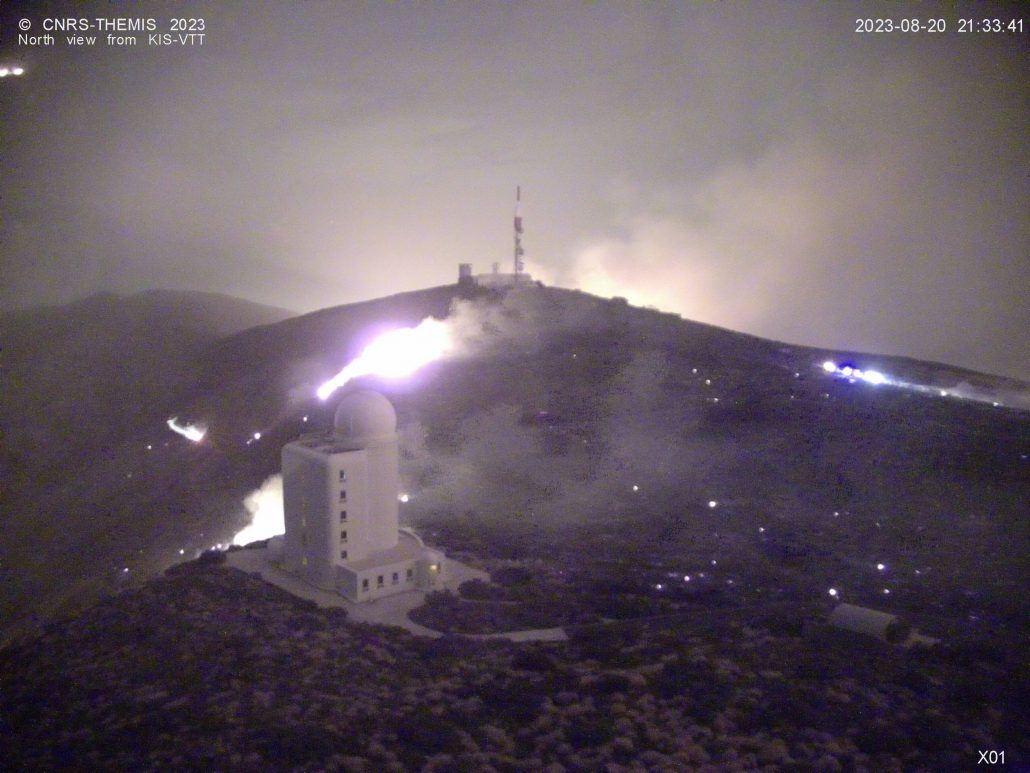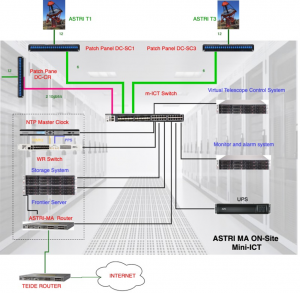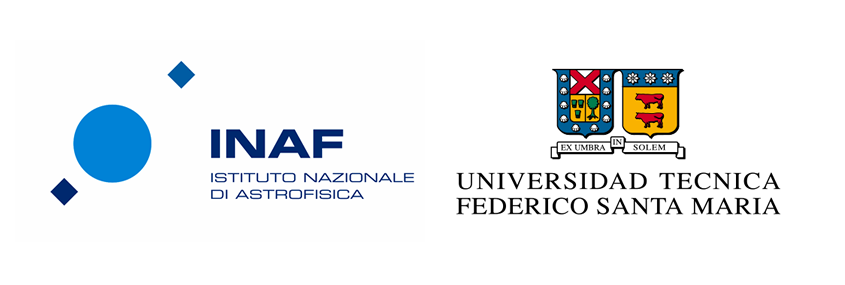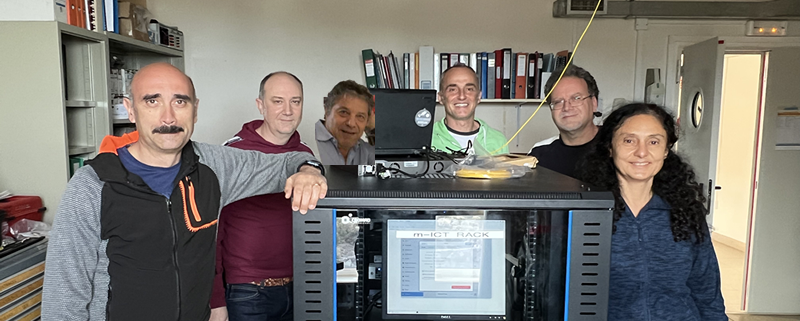Tenerife’s fire
Last night the fire in the Island reached the Observatory. As we hear from the Director of IAC, Rafael Rebolo, the situation is not as dire as could have been without measures, but still not completely under control.

Themis webcam on the night of Aug. 20th 2023.
Dear CCI members and User Institutions
We have managed to prevent damage to the OT facilities by the Tenerife
fire. Yesterday, Sunday, August 20, at approximately 3:00 p.m., the fire
that is devastating Tenerife entered the Teide Observatory through the
area that separates us from the Meteorological Observatory. The fire
checkpoints that had been deployed in the OT in anticipation of what
could happen reacted immediately and although the fire progressed
rapidly towards Themis and Stella, between them and the intervention of
helicopters it was possible to avoid damage to these research
facilities. Then the fire surrounded the observatory on the east and
south front, crossing the road that connects us with the meteorological
station and moving towards our main entrance around 9:00 p.m. The action
throughout the night of the fire services, firefighters and brigades
that were reinforced by the Military Emergency Unit and other resources
has managed to prevent the fire from damaging our telescopes.
I want to thank all the personnel of the firefighting services for their
total dedication, generosity and extreme professionalism that has
managed to save our facilities from the fire and, of course, the
authorities for their commitment to protect our Observatory, which are a
Canarian, national and international research facility.
The fire in Tenerife is not yet under control so we cannot fully exclude
any further problems. I will keep you informed on progress with the
extinction activities. With the hope that these circumstances do not
happen again and that the fire in Tenerife does not cause further damage
to our beloved island, we express our solidarity with all Tenerife
affected people in these hard times.
all the best
Rafael Rebolo
———————————————————————————————
INAF and Universidad Tecnica Federico Santa Maria (UTFSM) of Valparaiso for the development of the control software of ASTRI in ACS

UTFSM room with guests. Massimo Turatto is the last to the right of the table
On October 25th, 2022, in Valparaiso (Chile), the kick-off meeting of the new agreement between INAF and the Federico Santa Maria Technical University (UTSFM) has taken place. The agreement is related to the production of the ASTRI Mini-Array control software. Massimo Turatto, INAF researcher and now Italian scientific attaché in Chile, and various Chilean colleagues including Juan Yuz, Rector of the University were present. Other colleagues, including ASTRI Principal Investigator, Giovanni Pareschi, and ASTRI Project Manager Salvatore Scuderi, were connected remotely.
The agreement expands the international partnership of the ASTRI project, which is now in the executive phase, with the first telescope mounted in Tenerife and two others to be delivered in the coming months. Furthermore, the other six telescopes and the detection chambers are now in production. This is therefore the time to prepare the control system of the various telescopes, at the center of which is the control software. Particular standards, based on the Alma Common Software (ACS) IT infrastructure, developed precisely for the management of arrays of telescopes such as in ALMA, have to be followed.
As pointed out by Mauricio Araya, of the Astroinformatics section at the UTFSM and Director of the project for the control software of ASTRI, the Chilean group has a solid specific know-how in the field of control systems for astronomical projects in the ACS environment. In this field, UTFSM has twenty years of experience in Chile, with a legacy of successes including involvement in international projects, such as those led by ESO (European Southern Observatory), or by AUI (Associated Universities, Inc., USA, who manages the American share of ALMA). “The ASTRI project”, adds Araya, “is not in Chile, and therefore if we have been called to this task it is not because we are nearby, but because we know the system that ASTRI will have to use”.
“Working with ASTRI will open a new window because there is a need and the will to do it. But this is only the beginning of a new collaboration between our countries that we hope will last”, says Turatto.

The goals of the ASTRI control software
ASTRI – Mini-Array is now connected to the world!
Caption: Salvatore Scuderi, Alessandro Tacchini, Giuseppe Malaspina, Marcello Lodi, Fulvio Gianotti, Christine Grivel with the monolith m-ICT connected to the world. (Credits: Giuseppe Malaspina)
May 2022 –
In fact, every observing facility needs IT support both for operating the instruments on site and to handle the remote connections. This result was also achieved with the precious collaboration of local firms.
The joint effort made it possible to move from the initial paper sketches to a well-coded project and, finally, to this small, somewhat noisy monolith that is the m-ICT.
The m-ICT consists of various parts: the control system of the telescopes, the data acquisition system, which also allows the temporary storage of the acquired data, the monitoring of both the acquisition process and the status of the telescopes, the network that connects the telescopes to the site but also the connection with the outside world via Internet, and finally the temporal characterization system of the data which must assign a label to each datum with the precise indication of the instant of acquisition.
As Fulvio Gianotti, ICT manager for ASTRI on-site recalls: “m-ICT represents a temporary system in a reduced version, suitable for supporting the first phases of the program and in particular the installation of the first 3 telescopes before the final ICT is ready.” The m-ICT was installed in the premises of the CNRS Themis Solar Observatory, also intended to house the control room of ASTRI.
For technical experts, the system operation diagram is described in this figure:

Lo schema dei collegamenti del m-ICT
Con la collaborazione di Fulvio Gianotti
ASTRI is an INAF gamma-ray experiment with the collaboration of other international institutions (P.I. G. Pareschi) with the aim of observing the gamma ray sky from a few to hundreds of TeV by building a Mini-Array of 9 telescopes in Tenerife (Canarie, Spain – thanks to the Instituto de Astrofisica de Canaria, IAC hospitality). The Mini-Array telescopes are similar to those that will be constructed for the CTA project in the south.
Social: Facebook ASTRIgamma; Instagram @astrigamma
This post is also available in: Italian


